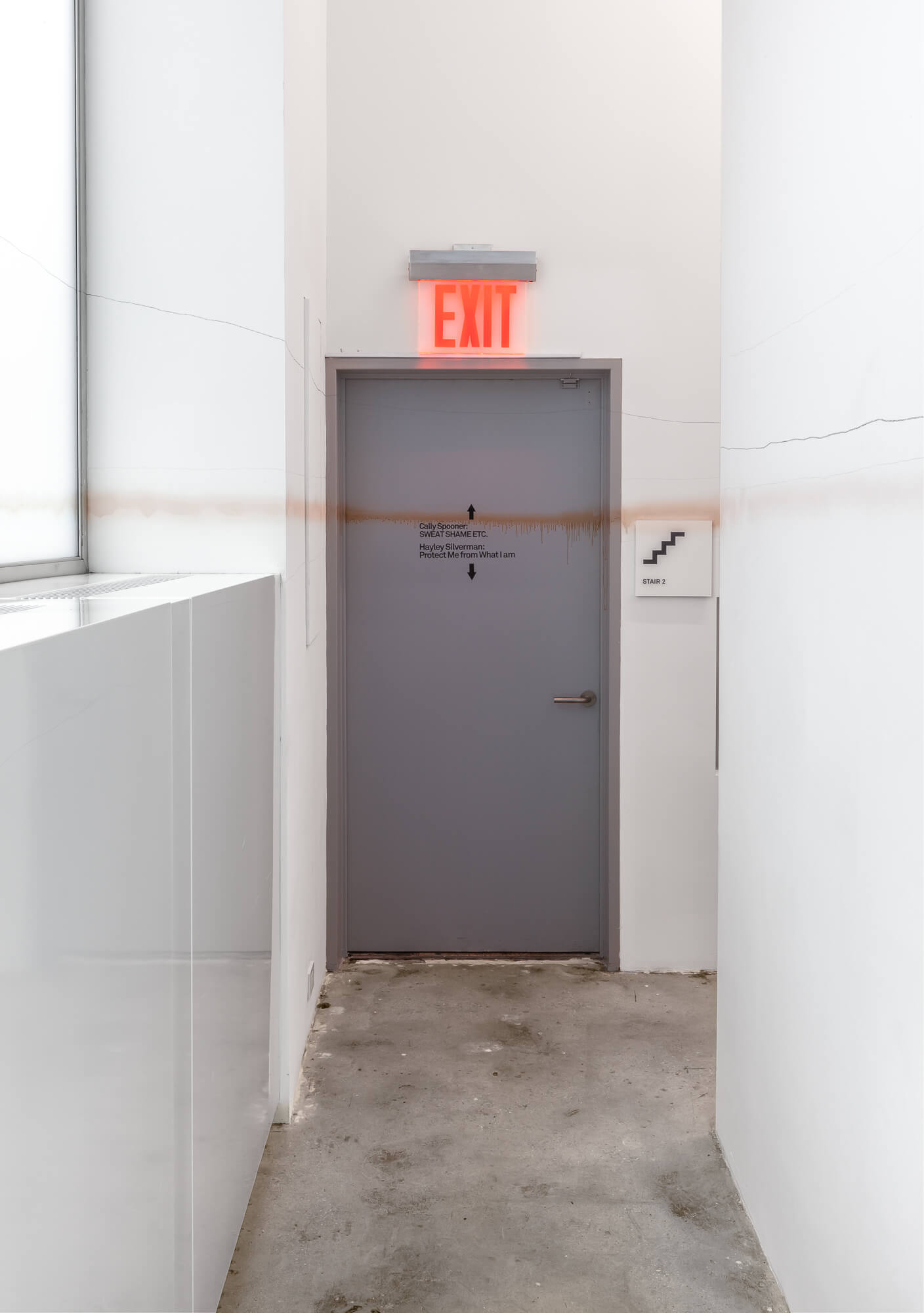Cally Spooner: SWEAT SHAME ETC. | Art In America
Mar 01 2019

In their book Self-Tracking (2016), authors Gina Neff and Dawn Nafus describe how new technology has conspired with the “biomedicalization” of everyday life to produce a culture increasingly occupied with measuring and tracking the human body. This decidedly twenty-first-century practice, and the broader obsession with statistics, self-improvement, and “normalcy” that it reflects, is central to British artist Cally Spooner’s Swiss Institute exhibition, “SWEAT SHAME ETC.” Neff and Nafus’s book is among a selection of publications available to peruse in the SI reading room as part of a program that OFFSHORE—a performance company and nomadic school of sorts led by Spooner—organized to accompany the show.
Rendered directly on the walls and windows of the Swiss Institute’s ground floor galleries, spanning the perimeter of the space, is a simple line graph. Three pencil lines chart the fluctuations, over a five-year period, of (1) Spooner’s thyroid-stimulating hormone levels, (2) her ranking on Artfacts.net, and (3) the British pound’s value relative to the euro. Running alongside the pencil lines is a line of spray tan tracking the average of the three data points. If the rising and falling pencil lines suggest a vague complicity between self-monitoring and profit-oriented notions of achievement, the streak of orangey-pink hints at the blandly monochrome picture that emerges when life is reduced to stats. It also conjures the flesh tones of an American president who has definitively left his greasy mark on the present era.
Commentators like to paint the Trump phenomenon as an aberration, but Spooner ties it directly to a prevailing cultural ethos in which efficiency, productivity, and personal achievement are vacuously lauded at the expense of social well-being. A sound piece, He Wins Every Time, On Time, and Under Budget (2018), features two overlapping audio tracks: one a recording of Ivanka Trump discussing her life as a businesswoman, and the other a recording of the labored breathing of a female dancer rehearsing while hampered by a cold. The dancer’s pained exertions throw into relief the automaton-like fluency of Ivanka, who effortlessly regurgitates corporate-feminist platitudes (“performance and results are what’s relevant”). In the context of the exhibition, Ivanka’s performance seems to stand for a vision of existence—inherited, the title of the work implies, from Daddy—as sterile and toxic as the heavily chlorinated water in the self-circulating drinking fountain that Spooner has placed near the center of the main gallery. This sculptural work,Murderous Public Drinking Fountain (2018), metaphorizes, in turn, not only the machinelike tyranny of a totally self-managed and administered life but the poisoning of the commons engendered under deregulated corporate capitalism.
Scattered throughout the ground floor space are several plinths, some empty and others displaying curious arrangements: a pile of pears, photocopies of images ofcorporate office buildings, a cast-iron human ear atop a stack of papers printed with passages from a gestalt therapy book. In a gesture that seems aimed once again at exposing the ambiguities of the culture of health and hygiene, the plinths have been created from olive oil soap—an emblem of cleanliness that is also, according to the press release, “vulnerable to shrinkage, decay, and age spots.”
The upstairs gallery features around two dozen small drawings of loosely sketched figures in poses culled from an exercise manual. The figures are mostly just an amalgam of limbs, their heads and torsos either furiously crossed out or left missing. Evoking body dysmorphia and a desire for anonymity, the images leave us dwelling on the feelings of inadequacy that fuel the self-improvement industry and impel us to sweat and self-monitor and self-shame and sweat, etc.
By David Markus
